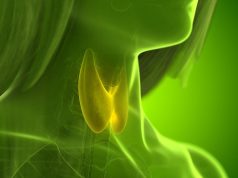Risk for uterine leiomyomata associated with ambient concentration of ozone, but not PM2.5 or NO2
FRDAY, May 14, 2021 (HealthDay News) — Ozone (O3) concentrations are associated with an increased risk for uterine leiomyomata (UL) in Black women, according to a study published online May 13 in Human Reproduction.
Amelia K. Wesselink, Ph.D., from the Boston University School of Public Health, and colleagues conducted a study involving 21,998 premenopausal Black women residing in 56 U.S. metropolitan areas from 1997 to 2011 to examine the association between ambient concentrations of particulate matter <2.5 microns (PM2.5), nitrogen dioxide (NO2), and O3 with the risk for UL.
The researchers found that 28.4 percent of participants reported physician-diagnosed UL confirmed by ultrasound or surgery during 196,685 person-years of follow-up. There was no appreciable association seen for concentrations of PM2.5 (hazard ratio for a one-interquartile range [IQR] increase, 1.01; 95 percent confidence interval, 0.93 to 1.10) or NO2 (hazard ratio for a one-IQR increase, 1.05; 95 percent confidence interval, 0.95 to 1.16) with UL; however, O3 concentrations were associated with an increased risk for UL (hazard ratio for a one-IQR increase, 1.19; 95 percent confidence interval, 1.07 to 1.32). Among women aged younger than 35 years and parous women, the association was stronger (hazard ratios, 1.26 [95 percent confidence interval, 0.98 to 1.62] and 1.28 [95 percent confidence interval, 1.11 to 1.48], respectively).
“There have now been three studies suggesting a link between air pollution and fibroids, but ours is the first to show this in Black women,” Wesselink said in a statement. “Because Black women are inequitably exposed to air pollution, these findings have important implications for racial disparity in fibroids.”
One author disclosed ties to the pharmaceutical and medical device industries.
Copyright © 2021 HealthDay. All rights reserved.








